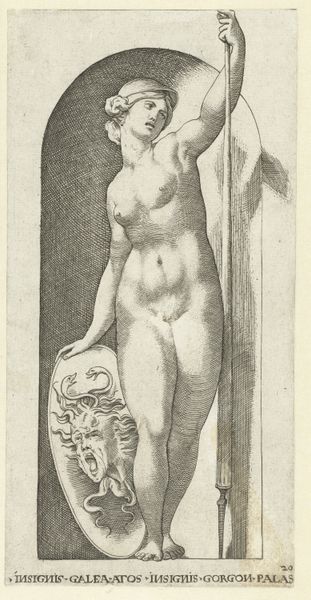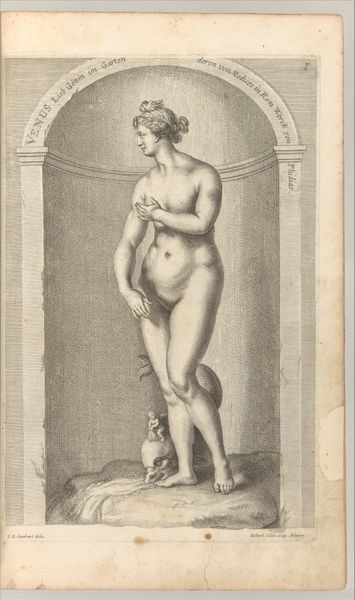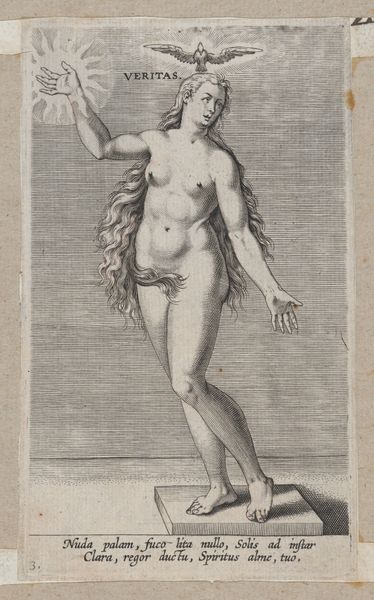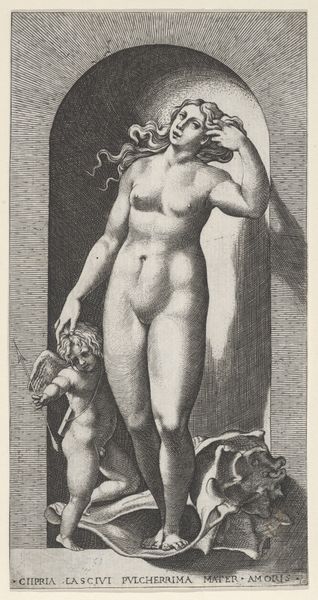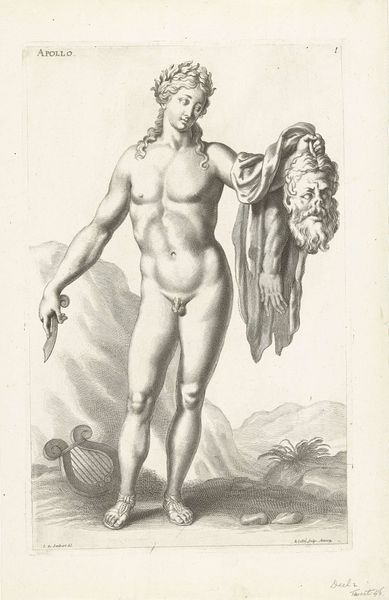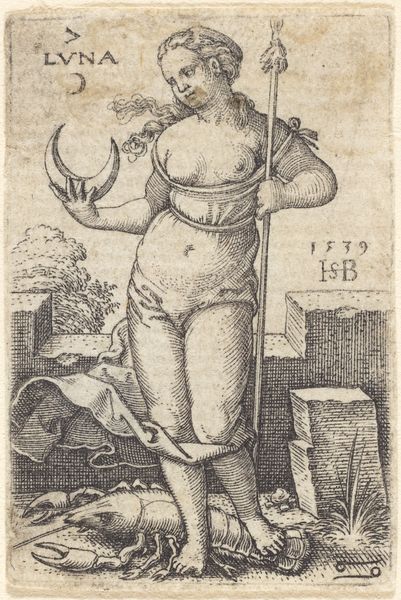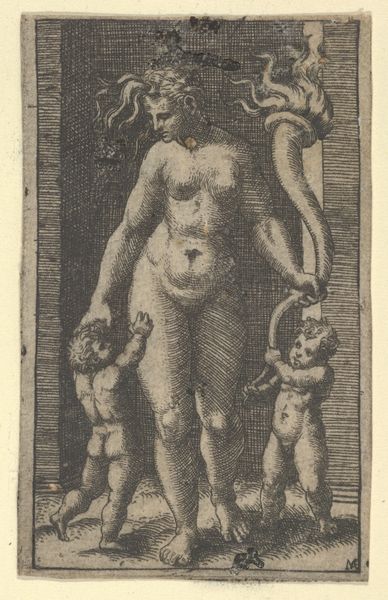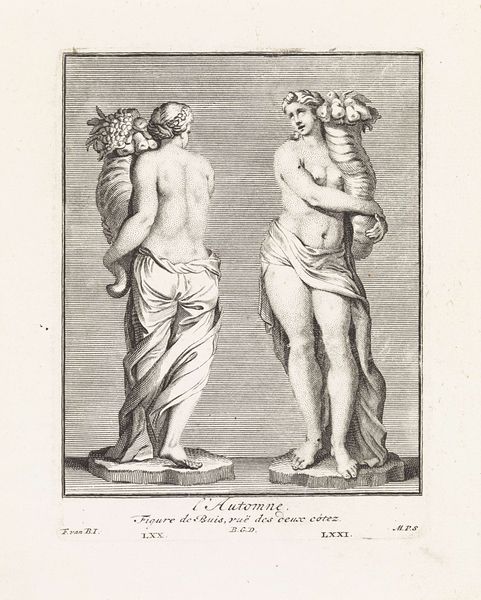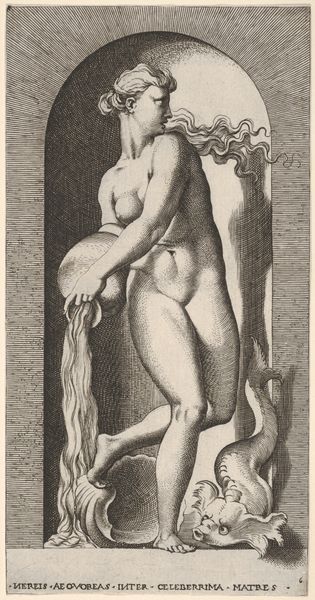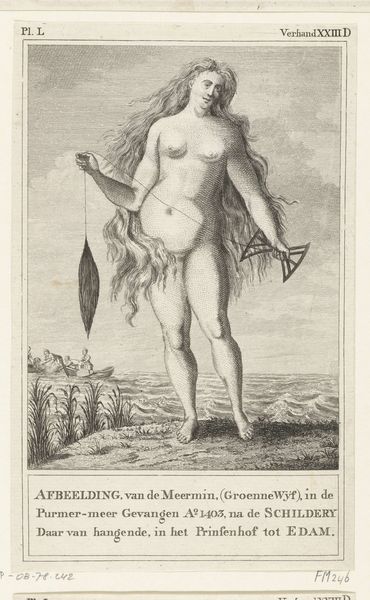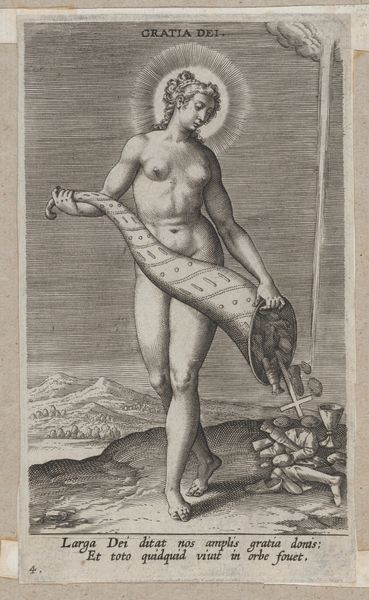
drawing, print, engraving
#
drawing
#
allegory
# print
#
figuration
#
form
#
11_renaissance
#
line
#
italian-renaissance
#
nude
#
engraving
Dimensions: plate: 16 9/16 x 11 1/4 in. (42 x 28.6 cm) sheet: 19 5/16 x 13 9/16 in. (49 x 34.5 cm)
Copyright: Public Domain
Curator: Let's discuss this engraving, "Venus and Eros," created around 1561. It is an outstanding work from the Speculum Romanae Magnificentiae, an ambitious project aiming to document the splendor of ancient Rome. Editor: It strikes me as both classic and quietly unsettling. The composition feels a bit static, even monumental, yet the details—the furrowed brow of Venus, the almost pouting Cupid—introduce an element of unease. It feels like a subversion of an idealized beauty. Curator: That's insightful. Notice how the anonymous engraver captured the ideal of female beauty prevalent during the Renaissance, drawing inspiration from classical sculpture. Venus embodies fertility and sensual love. It speaks to the enduring fascination with Roman aesthetics, a continuity of form over millennia. Editor: The choice to portray Venus as so imposing also subtly reflects a patriarchal structure that positions women in a symbolic role, like allegorical representations of "beauty" or "love", rather than individuals with their own agency. Her body is an idealized one, but that is also highly regulated and policed. Curator: Indeed. Furthermore, Eros or Cupid can be viewed here as the eternal emblem of desire and the power of attraction—his arrows symbolizing irresistible affection. The symbolic weight, in this depiction, rests not only on the form but also on centuries of inherited myth. Editor: Speaking of weight, let’s consider the medium, this precise linear engraving seems like a deliberate counterpoint to the very concepts of love and beauty that it represents: things normally portrayed in fluid, almost excessive terms. And that might reflect a more restrained and codified understanding of eros during the period. Curator: Precisely, and that contrast generates compelling tension. By adopting line engraving techniques to represent Venus and Cupid, this print marries artistic method with iconic significance. The very act of recreating classical figures in a contemporary artistic manner underscores its reverence for both the classical and the contemporary worlds. Editor: Reflecting on the act of engraving and documentation as preservation also feels important: in this era before photography, rendering works of art and allegorical figures becomes an act of preservation, a testament to their influence and a reminder that how they live on depends greatly on our interpretations. Curator: An excellent point! The "Speculum" was meant as a mirror—and that image in the mirror, that copy, allows that work of art to have meaning, impact, even authority, long after the artwork’s initial creation. Editor: A thought which certainly highlights the intertwined power of representation and influence. It also illuminates our task as interpreters of images, and as advocates for continuous critical approaches when interacting with artistic heritage.
Comments
No comments
Be the first to comment and join the conversation on the ultimate creative platform.
